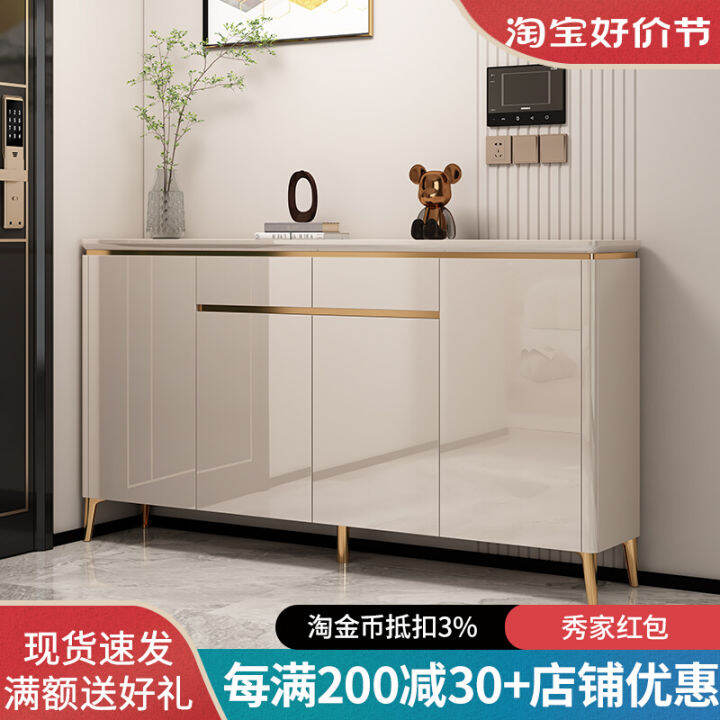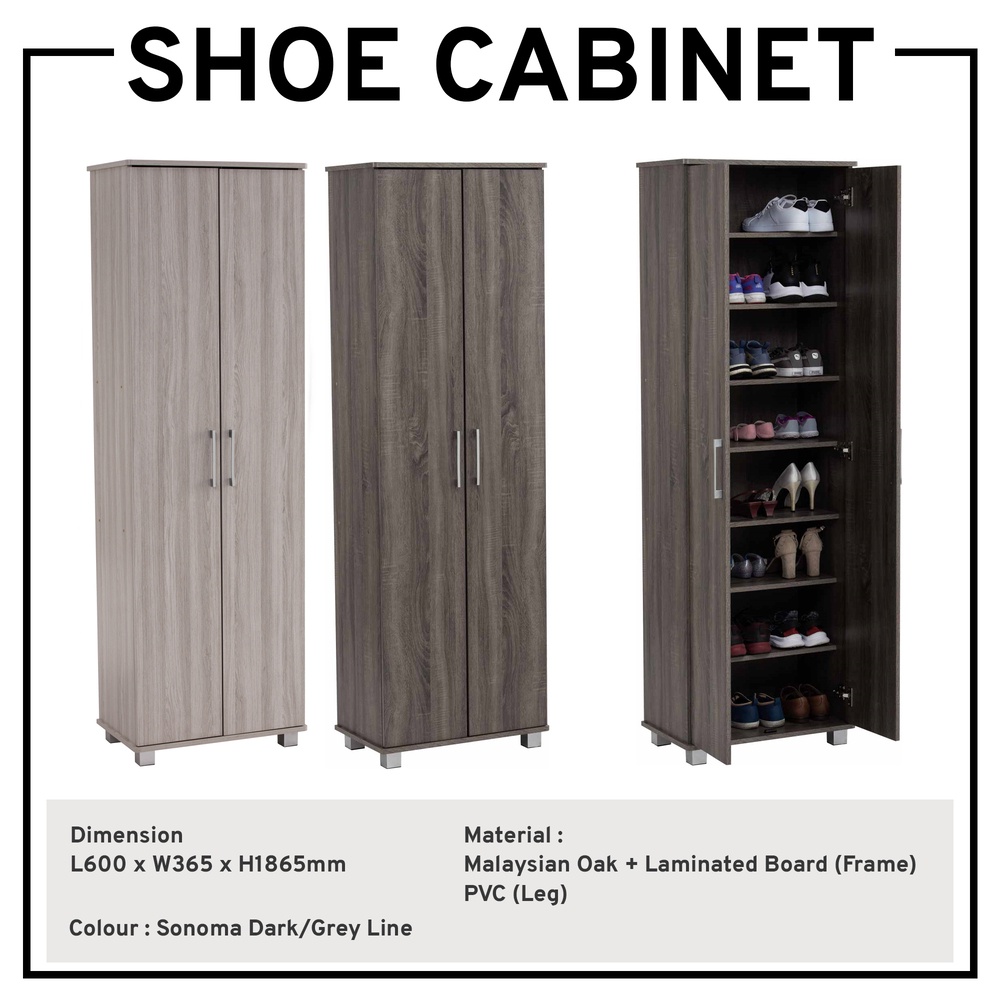Understanding Shallow Depth Shoe Cabinets
Shallow depth shoe cabinets are a space-saving and stylish solution for organizing your footwear collection. They offer a compact and efficient way to store shoes, maximizing vertical space while minimizing the footprint.
Design Features
Shallow depth shoe cabinets differ significantly from traditional shoe cabinets in their depth, storage capacity, and overall design.
- Depth: Shallow depth cabinets typically have a depth of 10-12 inches, compared to traditional cabinets which can be 18-24 inches deep. This reduced depth allows for efficient use of space, especially in smaller areas.
- Storage Capacity: While shallow depth cabinets have less depth, they often have multiple tiers or shelves, maximizing vertical storage space. This allows you to store a significant number of shoes without taking up much floor area.
- Design: Shallow depth cabinets come in various styles and designs, including open shelves, drawers, and enclosed compartments. They can be freestanding, wall-mounted, or integrated into existing furniture.
Materials
Shallow depth shoe cabinets are constructed using various materials, each with its own unique properties and advantages.
- Wood: Wooden cabinets offer durability, natural beauty, and a timeless appeal. They can be stained or painted to match your decor. Popular wood choices include oak, maple, and pine.
- Metal: Metal cabinets are known for their strength, durability, and affordability. They are often powder-coated for a smooth finish and resistance to corrosion. Steel and aluminum are common metals used.
- Plastic: Plastic cabinets are lightweight, easy to clean, and budget-friendly. They come in a variety of colors and styles. However, they may not be as durable as wood or metal cabinets.
Types of Shallow Depth Shoe Cabinets

Shallow depth shoe cabinets come in a variety of designs and styles, each catering to different needs and aesthetics. They can be open, closed, or a combination of both, offering versatile storage solutions for various spaces.
Open Shelves
Open shelves provide a simple and accessible way to store shoes. They are ideal for displaying your favorite footwear or showcasing a curated collection. The open design allows for easy visibility and selection, making it easy to find the right pair. These cabinets are also easy to clean and maintain, as there are no doors or drawers to obstruct access.
Drawers
Shallow depth shoe cabinets with drawers offer a more discreet and organized storage solution. Drawers keep your shoes hidden from view, maintaining a clean and clutter-free look. They are also ideal for protecting shoes from dust and damage. The drawers can be fitted with dividers or organizers to further categorize and separate your footwear.
Combination of Open Shelves and Drawers
Combining open shelves and drawers offers a balanced approach to shoe storage. Open shelves can be used for frequently worn shoes, while drawers can be used for seasonal or less-used items. This combination provides both visibility and discreet storage, offering a practical and aesthetically pleasing solution.
Styles
Shallow depth shoe cabinets are available in a variety of styles to complement different interior designs.
Contemporary
Contemporary shallow depth shoe cabinets often feature clean lines, minimalist designs, and sleek finishes. They are typically made from materials like metal, glass, or high-gloss laminates, and often incorporate geometric shapes and patterns.
Modern
Modern shallow depth shoe cabinets share similarities with contemporary styles, but may incorporate more organic shapes and textures. They often feature natural materials like wood, stone, or bamboo, and may include bold colors or contrasting elements.
Rustic
Rustic shallow depth shoe cabinets embrace a more natural and traditional aesthetic. They are often made from reclaimed wood, weathered metal, or other rustic materials, and may feature distressed finishes or antique accents.
Traditional
Traditional shallow depth shoe cabinets are characterized by their classic designs and ornate details. They are typically made from solid wood, often with intricate carvings or decorative hardware. These cabinets often feature a more formal and elegant style.
Specific Purposes
Shallow depth shoe cabinets are designed for various purposes, offering efficient storage solutions for different areas of the home.
Entryway Storage
Entryway shoe cabinets are designed to provide a convenient and organized place to store shoes upon entering the home. They typically feature a shallow depth to fit against the wall and maximize space. They may also include features like coat hooks, storage baskets, or seating to further enhance functionality.
Bedroom Closets
Shallow depth shoe cabinets are also ideal for organizing bedroom closets. They can be used to store shoes, accessories, or other items, keeping the closet tidy and organized. They are available in various sizes and configurations to fit different closet spaces.
Mudrooms
Mudrooms are often equipped with shallow depth shoe cabinets to provide a designated space for storing muddy or wet shoes. These cabinets are typically durable and easy to clean, and may include features like shoe trays or boot racks to further enhance functionality.
Choosing the Right Shallow Depth Shoe Cabinet

Finding the perfect shallow depth shoe cabinet involves considering several key factors. You’ll want to ensure the cabinet fits your space, complements your style, and effectively stores your footwear.
Factors to Consider When Choosing a Shallow Depth Shoe Cabinet
The size, material, style, and storage capacity are crucial considerations when choosing a shallow depth shoe cabinet.
- Size: Measure the available space carefully. Consider the width, height, and depth of the cabinet, ensuring it fits comfortably in the designated area. Also, determine the number of shoes you need to store and select a cabinet with sufficient capacity.
- Material: Shallow depth shoe cabinets are often made from wood, metal, or plastic. Wood cabinets offer a classic and elegant look, while metal cabinets are durable and easy to clean. Plastic cabinets are lightweight and budget-friendly. Choose a material that complements your existing decor and meets your needs.
- Style: Shallow depth shoe cabinets come in various styles, ranging from contemporary to traditional. Select a style that complements your existing furniture and personal preferences. Consider the overall aesthetic you want to achieve in the space.
- Storage Capacity: Consider the number of shoes you need to store. Choose a cabinet with enough shelves or drawers to accommodate your collection. If you have a large shoe collection, opt for a cabinet with multiple tiers or drawers.
Open Shelves Versus Drawers, Shallow depth shoe cabinet
Open shelves and drawers offer different advantages and disadvantages for shallow depth shoe cabinets.
- Open Shelves:
- Pros: Open shelves provide easy access to your shoes and allow you to showcase your collection. They are also generally less expensive than drawers.
- Cons: Open shelves can accumulate dust and may not be suitable for storing delicate shoes. They can also make the space appear cluttered if not organized properly.
- Drawers:
- Pros: Drawers offer a more organized and dust-free storage solution. They are ideal for storing delicate shoes and can help to maintain a clean and tidy appearance.
- Cons: Drawers can be more expensive than open shelves and may not be as convenient for accessing shoes. They can also be more difficult to clean.
Measuring the Space and Determining the Appropriate Size and Configuration
Accurately measuring the space and determining the appropriate size and configuration of the shoe cabinet are crucial for a successful purchase.
- Measure the Available Space: Use a tape measure to determine the width, height, and depth of the space where you plan to place the shoe cabinet. Ensure that the cabinet fits comfortably in the designated area, leaving enough room for opening doors or drawers.
- Consider the Number of Shoes: Determine the number of shoes you need to store and select a cabinet with enough shelves or drawers to accommodate your collection. For example, if you have 20 pairs of shoes, consider a cabinet with at least 10 shelves or drawers.
- Think About the Configuration: Consider the configuration of the shelves or drawers. Do you prefer a single row of shelves or multiple tiers? Do you need drawers for specific types of shoes, such as dress shoes or sneakers?
Shallow depth shoe cabinets are great for smaller spaces, but what if you have a collection that’s, well, a bit more extensive? That’s where a 50 pair shoe cabinet comes in handy. It might be a bit deeper, but you’ll be able to keep all your kicks organized and easily accessible, even if you’re a serious sneakerhead.
Shallow depth cabinets can still be a great choice for smaller collections, though, so it all comes down to what works best for your needs.
Shallow depth shoe cabinets are great for maximizing space, especially in smaller entryways. But sometimes you need a bit more security for your prized possessions, and that’s where a glass curio cabinet with lock comes in handy. They’re perfect for displaying your favorite collectibles or family heirlooms, and the lock ensures they’re safe from prying eyes.
Even though shoe cabinets and curio cabinets have different purposes, they both offer a stylish and practical solution for organizing your belongings.

